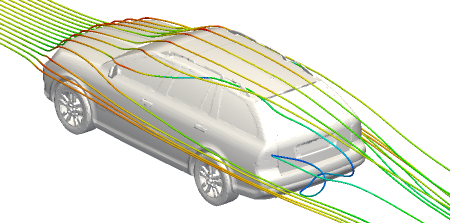I previously described the model for OpenFOAM training through which Jenya Collings and I provided almost 500 days of instructor-led classes to 2,500 particpants. I noted that sometime after the release of v.2.0.0 in 2011, the participants at OpenFOAM training very often had little experience of CFD and OpenFOAM could do most of the things they needed “out of the box”. I concluded that the training created in 2008 for early adopters of OpenFOAM was becoming outdated and a new type of training was required.
CFD Training
The original courses, designed for the early adopters of OpenFOAM, was OpenFOAM Software Training, i.e. it was about how the software worked, how to customize it, etc. Training is needed that concentrates on enabling people to deliver successful CFD solutions with OpenFOAM. In other words, training needs to enable competence in CFD, rather than merely describe how OpenFOAM works. By competence, I mean the confidence to carry out a task to a defined standard, repeatedly, a definition used by Robin Hoyle of Learnworks, author of Complete Training. The point is that, having left the training classroom, a trainee should be able to do the following.
- Deliver a good solution with CFD, rather than freeze at the keyboard (confidence).
- Deliver the next good solution, and another, … (repeatedly).
- Understand what a good solution looks like and deliver solutions in a timely manner (required standard).
This change in emphasis from software training to CFD training presents a significant challenge because CFD involves so many components: fluid dynamics; physical modelling; geometry and meshing; numerical methods; data analysis; and, computing and programming. Many of these components do not relate to how OpenFOAM works, but how the user deploys OpenFOAM, e.g. choosing which solver to use, which models to select and interpreting the results.
Creating CFD Training Courses
It takes time to create good quality training courses. CFD Training courses with reasonable coverage could be expected to run for 4 days, which equates to several months preparation time. We have given that time to the development of our CFD Training, giving it the thought and attention participants of training deserve. We started with blank sheet of paper and established that the OpenFOAM users needed CFD training that covered all components of CFD, as described above. Participants still need to learn about the OpenFOAM software, so there was a risk that the course content would increase to an unmanageable level. The training also needs to capture the experience of doing CFD in the real world and across a range of application.
Making OpenFOAM Easier to Use
We are reducing the amount of knowledge required to set up and run CFD simulations by the following developments to OpenFOAM.
- Template cases, that provide a convenient way to set up and start a new simulation.
- Packaged tools, particularly for post-processing, that can be plugged into a case as required.
- Separating required user input data from application configuration controls, e.g. for snappyHexMesh.
- Code feature changes to reduce the number of steps required for a given task.
This enables training participants to spend less time learning how to use OpenFOAM, leaving more time to learn about CFD.
Learning CFD through Experience
Effective training in applied sciences involves the process of learning through experience, or learning through reflection on doing. Our CFD training incorporates this form of learning by presenting participants with real cases spanning a range of scientific disciplines and industries. Admittedly, it is not possible to run large scale CFD problems with the time and hardware constraints of the training class. We have therefore created a set of representative cases, using moderately complex CAD geometry, covering a range of flows. Cases include external aerodynamics of a car, wind flow around buildings, static mixer, nozzle jet, cyclone, water channel, etc, with relevance across a broad range of engineering disciplines, e.g. chemical, automotive, civil, mechanical, etc.
Structured Courses
The CFD training courses are structured in 45 minute modules that each address a specific topic within one of the CFD components. CFD solutions are built in small, digestible steps with periods of reflection to reinforce new concepts. The process of small steps also reflects real CFD practice, in which trouble-free, complex simulations cannot usually be set up in “one go”. Cases are built from scratch, using template cases and packaged tools. This replaces the method of training that simply describes the workings of a pre-configured case which inevitably runs without difficulty, but does little to build competence in CFD.
Current CFD Training
The CFD Training for OpenFOAM that we now offer has been developed to meet the needs of today’s CFD users. It has been created:
- by founder members of the OpenFOAM project (who can genuinely claim expertise in OpenFOAM and CFD);
- by the people with the most experience in OpenFOAM training and in training processes generally;
- over a dedicated period of time (6 months) that quality training requires.
Further information can be found here:
- OpenFOAM Training
- Essential CFD OpenFOAM Training Course
- Applied CFD OpenFOAM Training Course
- Programming CFD OpenFOAM Training Course
- Cloud CFD OpenFOAM Training Course
- Course schedule and booking


